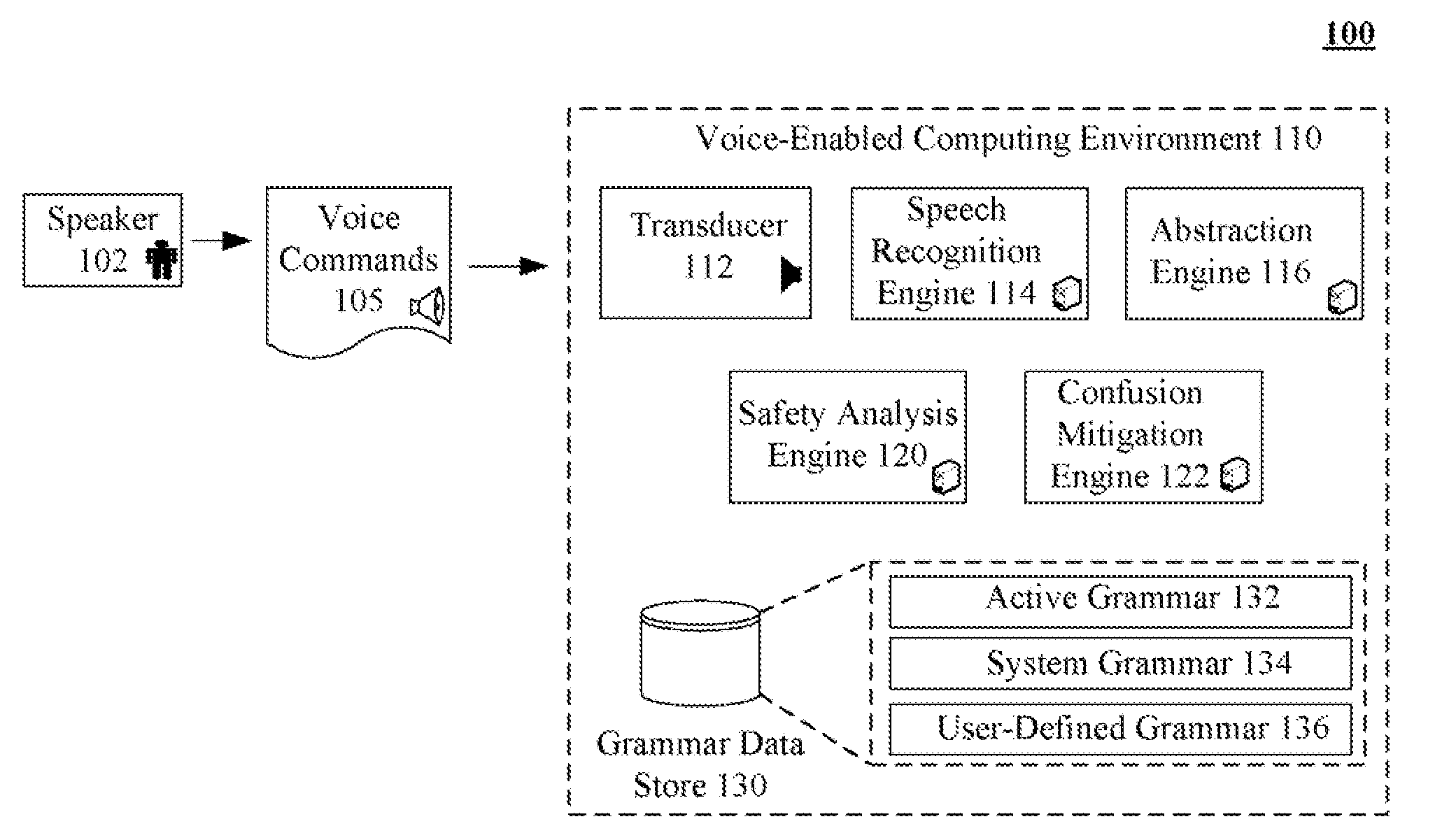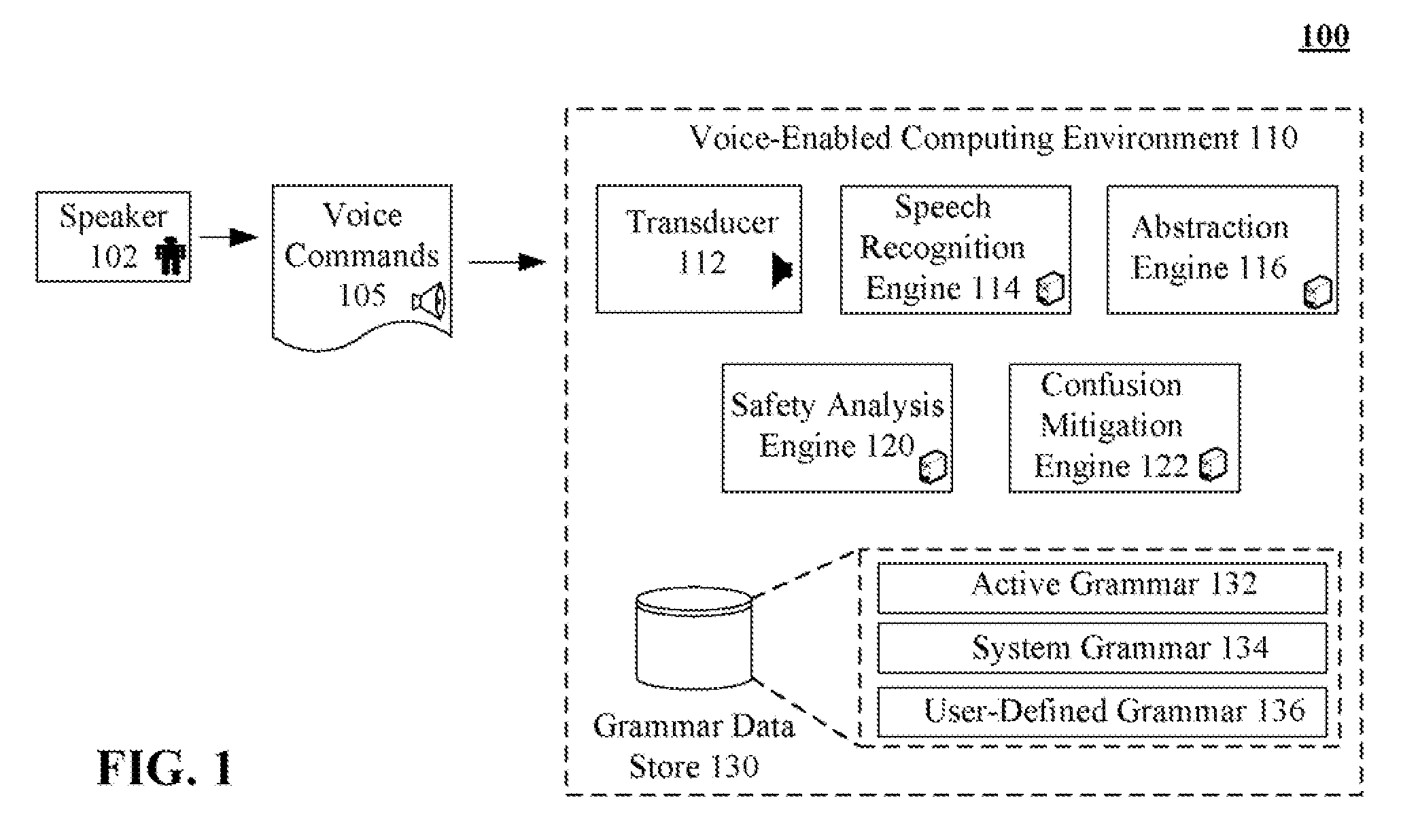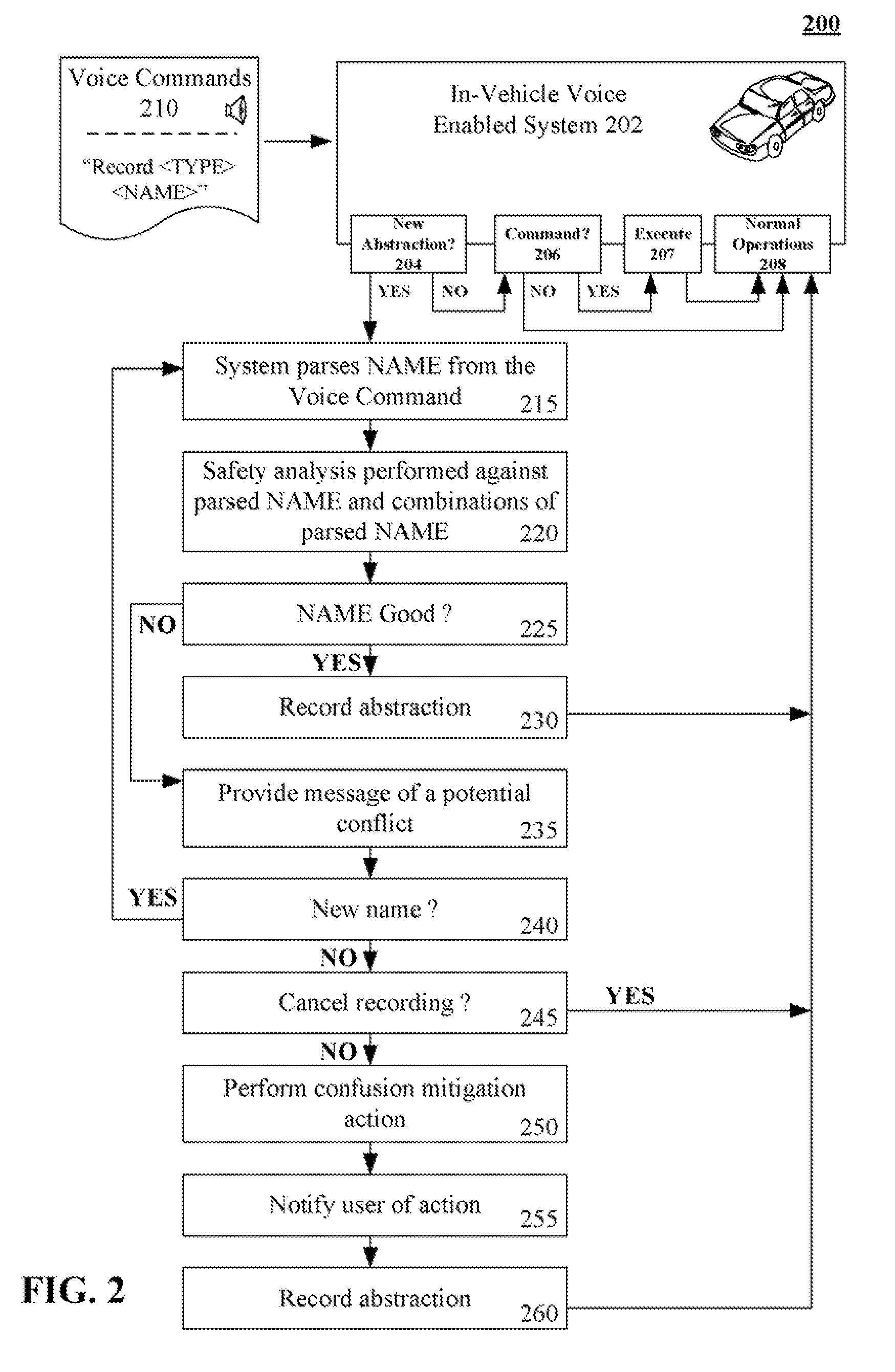Performing a safety analysis for user-defined voice commands to ensure that the voice commands do not cause speech recognition ambiguities
a technology of voice commands and safety analysis, applied in the field of speech technologies, can solve problems such as confusion of user-defined voice commands
- Summary
- Abstract
- Description
- Claims
- Application Information
AI Technical Summary
Benefits of technology
Problems solved by technology
Method used
Image
Examples
Embodiment Construction
[0023]FIG. 1 is a schematic diagram of a system 100 that performs a safety analysis on new voice commands to ensure that the voice commands do not cause speech recognition ambiguities with existing voice commands in accordance with an embodiment of the inventive arrangements disclosed herein. System 100 can include a voice-enabled computing environment 110, which includes a transducer 112, a speech recognition engine 114, and a grammar data store 130.
[0024]The voice-enabled computing environment 110 can be any computing environment capable of receiving and responding to voice commands 105 from one or more speakers 102. The voice-enabled computing environment 110 can be a voice-only environment as well as a multimodal environment having other input-output modalities than voice-based ones.
[0025]The speaker 102 can be any person or device capable of issuing speech, which includes previously recorded speech and speech issued from a remote location that is locally played via a speaker. T...
PUM
 Login to View More
Login to View More Abstract
Description
Claims
Application Information
 Login to View More
Login to View More - R&D
- Intellectual Property
- Life Sciences
- Materials
- Tech Scout
- Unparalleled Data Quality
- Higher Quality Content
- 60% Fewer Hallucinations
Browse by: Latest US Patents, China's latest patents, Technical Efficacy Thesaurus, Application Domain, Technology Topic, Popular Technical Reports.
© 2025 PatSnap. All rights reserved.Legal|Privacy policy|Modern Slavery Act Transparency Statement|Sitemap|About US| Contact US: help@patsnap.com



